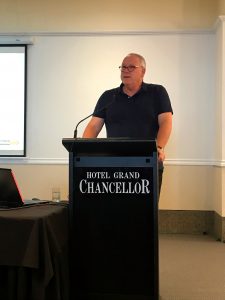
Single-day occupational health and safety (OHS) symposia, colloquia and seminars seem to be increasing in popularity in Australia. The latest that SafetyAtWorkBlog attended was for the Victorian Institute of Occupational Safety and Health but Tasmania had a couple last year and in the upcoming months is one in Perth, one in Tasmania and another in Sydney. The advantage with this format is that
- the event is cheap (some are free)
- it is easier to take one day away from work than two or three days
- the costs of running them are minimised,
- local delegates have minimal travel costs, and
- although the pool of delegates is usually local, it can be more diverse.
These seminars occupy the middle ground between webinar and conferences and, as a regular at these events, SafetyAtWorkBlog has some tips for organisers and delegates that will increase the value of attendance.




 Today,
Today,  This article is part two of an edited version of a keynote presentation I made at the a special WHS Inspectors Forum organised by WorkSafe Tasmania. The audience comprised inspectors from around Australia and New Zealand. I was asked to be provocative and challenging so posed some questions to the audience about how occupational health and safety (OHS) is managed, regulated and inspected.
This article is part two of an edited version of a keynote presentation I made at the a special WHS Inspectors Forum organised by WorkSafe Tasmania. The audience comprised inspectors from around Australia and New Zealand. I was asked to be provocative and challenging so posed some questions to the audience about how occupational health and safety (OHS) is managed, regulated and inspected. Some readers have asked for more information about the “Share Solutions” program mentioned in a previous article. The initiative started in 1988 but this article is based on the second edition from 1995.
Some readers have asked for more information about the “Share Solutions” program mentioned in a previous article. The initiative started in 1988 but this article is based on the second edition from 1995.